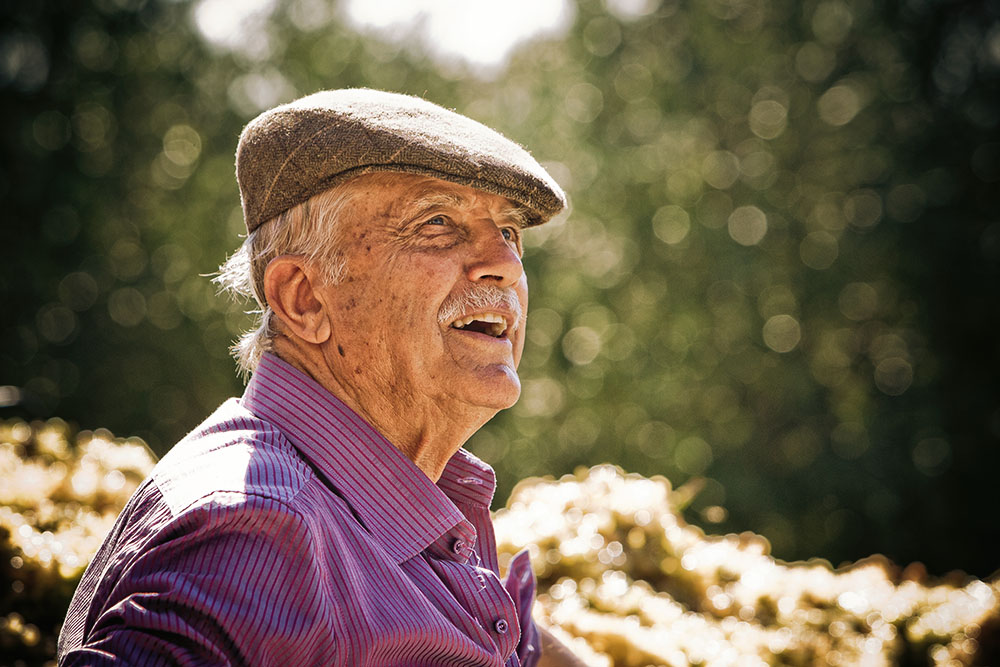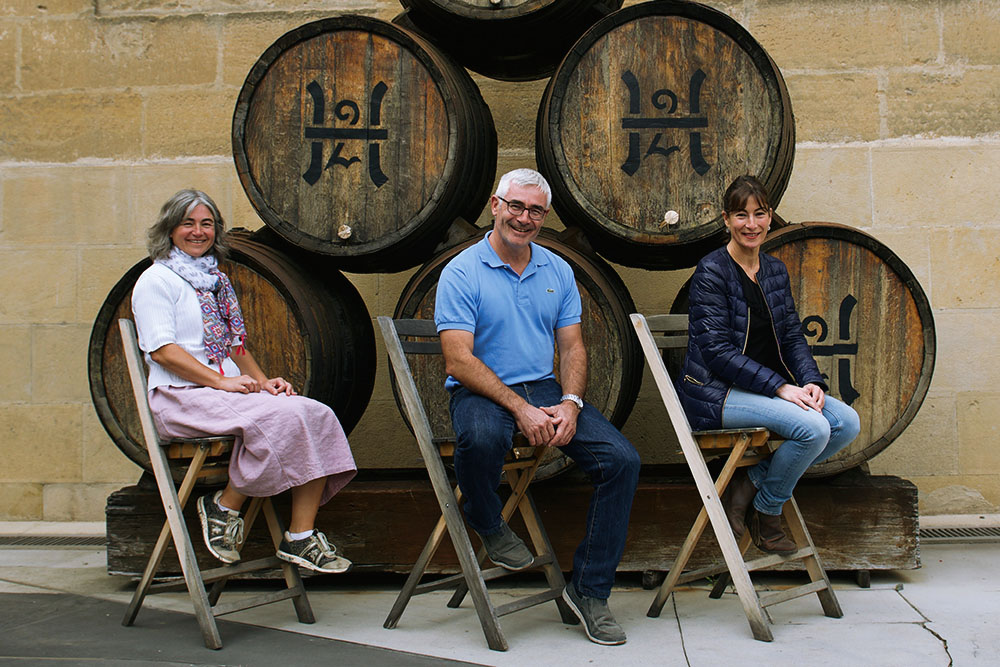Standing in the rosé section of the liquor store, I am wondering if producers have forgotten about all of the colours of the rainbow.
The labels are different but there is one shade that stands out: very pale peach. Most people associate this beautiful hue with the delicate, dry style of Provence rosé. The region is known for its light and sophisticated style of pink wine, which has gained incredible popularity all over the world in the last decade. Some anthropologists, like Richard C. Delerins, partly associate this rise to millennial pink and the image it represents for younger drinkers: the dream of the seaside, spontaneity and the importance of embracing life, #YOLO.
Its success has been so striking that regions initially known for a different style of rosé have started to imitate the Provençal style, rather than perfecting what makes their own rosé unique. While I understand the temptation to spike sales, I think it’s unfortunate. Just like with white or red wine, there are many styles of rosé to be celebrated, each offering a distinctive expression and suited to different occasions and moods. It’s impossible to list them all in one article but I am hoping that putting the spotlight on a few favourites will inspire you to explore from time to time.
If the delicate style of rosé from Côtes de Provence, Coteaux d’Aix-en-Provence and Coteaux Varois en Provence continues to play the leading role, the small appellation of Bandol, also located in the region of Provence, crafts premium, complex rosé that’s full of character. Planted on south-facing terraces not far from the sea, Mourvèdre finds a happy home in Bandol. The grape is typically blended with Grenache and Cinsault, and together, they produce serious and structured, pale-salmon-coloured rosé with aromas of dried herbs, orange peel and grapefruit complemented by a pleasant, salty tang. One needs to try a young version from Domaine Tempier and then open the same wine five years later to understand how profound these rosés can be. With time, they reveal their real depth. Domaine du Gros’Noré is another great producer to seek out.
Keeping with the theme of personality, the dry and pigmented rosés of Tavel are not meant to sip by the pool while you are reading your favourite book. Rather, they shine at the table. Thanks to its 2,700 hours of sunshine a year and dry climate, this Southern Rhône region produces generous and full-bodied wines, made mostly from Grenache and Cinsault, which often reach 14 percent ABV.
They too can age for a few years. With time, they develop pleasant almond aromas. Domaine de la Mordorée is the producer that made me realize how fantastic Tavel’s wines can be. Ratatouille is a classic match, but Peking duck is an absolute must try. Don’t be scared: the deep pink colour with an orange hue doesn’t promise sugar; Tavel is always dry. (Colour is not an indication of whether a wine is dry or sweet.)
Staying in France, I feel compelled to talk about Cabernet d’Anjou. While sweet rosés hailing from some of the New World regions like California have been popular with some consumers, they have also tarnished the reputation of the sweeter style of rosé.
It’s always a good reminder that, rather than looking at the residual sugar of a wine, one should pay attention to the balance between fruit, acid and sugar. Let’s not forget that some of the most complex German Rieslings have residual sugar. In the Loire Valley, Cabernet d’Anjou, which is made from Cabernet Franc and Cabernet Sauvignon, has fallen off the drinker’s radar and its slightly sweet profile has not been helping. Yet, despite the residual sugar (min of 10g/l), Cabernet d’Anjou is serious rosé with beautiful wild strawberry and red fruit notes with brisk acidity that balances the residual sugar. The best ones can be put away in the cellar for a few years. I especially like them as an aperitif, but they are also fantastic with spicy Chinese and Korean food. Rosé d’Anjou offers a lesser serious version meant to be drunk young and is usually made with Grolleau. Going farther east in the Loire Valley, Sancerre rosé exudes the magic of Pinot Noir with its elegance and purity. Domaine Vacheron, Alphonse Mellot and François Cotat are great choices.
From the Veneto region, where you can quench your thirst with Chiaretto Bardolino, all the way to the southern dry and fertile land of Puglia, where rich and dark rosés are made from Negroamaro, Italy crafts all shades of rosé. One particular appellation I kept reaching for last year was Cerasuolo d’Abruzzo. Made mostly of Montepulciano (the appellation allows other grapes up to a maximum of 15 percent), this dark pink wine is dry with generous fruit contained by a tannic structure and balanced by a pleasant savoury bitterness.
If served in a dark glass, you would find yourself navigating somewhere between a white and a red. Those made by famous producers Valentini and Emidio Pepe are in high demand. However, it’s the talented hand of Cristiana Tiberio that made me fall in love. Made from Montepulciano vines averaging 57 years of age, her Cerasuolo is full of character with an irresistible charm. It proved to be the ideal wine to sip while eating roasted lamb on a sunny summer afternoon at a friend’s wedding.
In the world of rosé, the ultimate example of complexity, depth and authenticity is the Viña Tondonia Gran Reserva, made by iconic producer Lopez de Heredia. The Rioja region crafts different styles that navigate between Provence wannabes and ones with personality that employ the tradition of aging in American wood for a number of years prior to release. Each sip of Lopez de Heredia speaks of history and tradition. The wine, made only in exceptional years, is aged for four years in American wood prior to being bottled and aged further in the cellar. The 2009, which was just recently released, gave me one of the most profound experiences I’ve had with a rosé.
The continued success of rosé has also inspired winemakers in New World regions to craft their own versions. Personally, I find the best ones are those that express regionality and sites rather than those that try to emulate Provence. I’ve had delicious experiences with rosés made from Grenache in McLaren Vale, Pinot Noir in the Yarra Valley, as well as Gamay and Pinot Noir in British Columbia and Ontario. The dry Vin Gris from Bonny Doon and Birichino in California continue to be regulars in my wine fridge. Winemakers often tell me that making rosé requires a unique technique that is difficult to master. I can only imagine that with time and experience, more fine examples of New World rosé will continue to appear on the shelves.
The world of rosé is vast with many shades of pink and each hue has its own story to tell. These stories are composed of people and places. And each year, the tales have their own nuances written by Mother Nature. So even your favourite label may surprise you when the new vintage is released. Wine is an elixir capable of constantly whispering something new and unique. Let’s celebrate that diversity.
Château d’Aquéria 2018, Tavel AOC ($24)
Dark cherry-red hue. Dry with generous ripe aromas of wild strawberries, orange zest, marzipan and dried herbs. Full body and good structure with grapefruit zest that compensates for softer acid. Meant to be enjoyed with food. Ratatouille is the classic but I love Tavel with beef tartare.
Pascal Jolivet Attitude 2018, Val de Loire IGP ($19)
One third Pinot Noir, one third Cabernet Franc, one third Gamay. Pale coral hue. A dry, light-bodied rosé with a nice palate where notes of bread dough, mushroom, redcurrant and red cherries are in symbiosis. Fruit-driven; simple but pleasing.
Lopez de Heredia Viña Tondonia 2009, Rioja Gran Reserva DOC ($65)
The dark salmon hue is a testament to the age of the wine. Full body with stunning, complex palate made of oxidative rancio notes of almond and orange peel with a rounded edge and subtle integrated notes of coconut from American oak. Great freshness despite its developed character, offering the great paradox of age and youth in the same bottle. Long, lingering finish. One of the most complex rosado I’ve had. Made to sing with paella but a delight with Peking duck.
Tiberio 2018, Cerasuolo d’Abruzzo ($25)
Vines averaging 57 years old are planted at 350 m beneath the Majella and Gran Sasso mountains in Abruzzo. Beautiful dark cherry hue. Dry with charming, abundant red and sour cherry fruit structured by chalky tannins with fresh acid and a pleasant bitter finish. Savoury and delicious on a hot summer day with roasted pig or grilled lamb.
Charles Melton Rose of Virginia 2018, Barossa ($25)
Dark ruby hue. Full body with just a little hint of residual sugar balanced by fresh acid and generous, rich notes of strawberries, red cherries and red plum. Definitely made for the rosé lover who enjoys a more flamboyant and fruity style.
Esprit Gassier Limited Night Edition 2018, Côtes de Provence AOC ($21)
Pretty pale peach hue. Dry with delicate notes of wild strawberries, grapefruit and orange blossom marked by bread dough with a pleasant salty tang on the finish. Light body with creamy texture and fresh acid. Enjoy on its own or with salmon gravlax and a pea shoot salad.
Château des Sarrins 2017, Côtes de Provence AOC ($27)
The proof that rosé can keep and that even a Côtes de Provence is not too old after a couple of years in the bottle. Pretty pale peach hue. Dry with a profile made of orange peel, grapefruit and almond with a little bit more character than one would imagine from a delicate Côtes de Provence. With time, age brings out personality.



